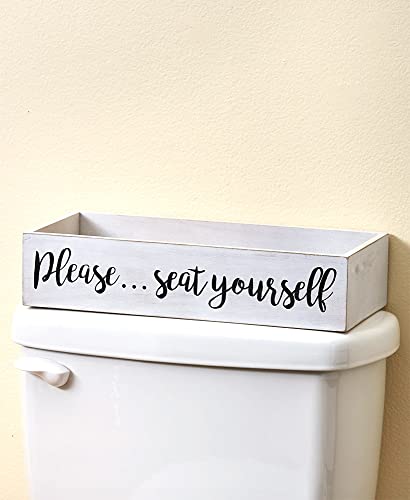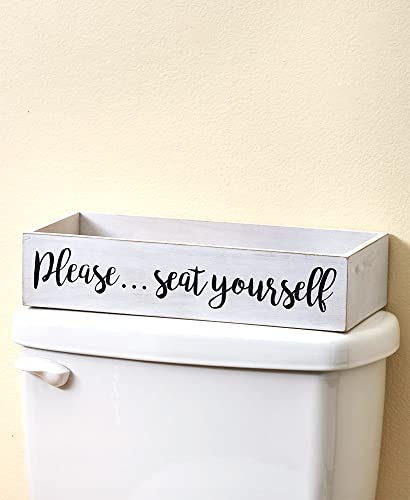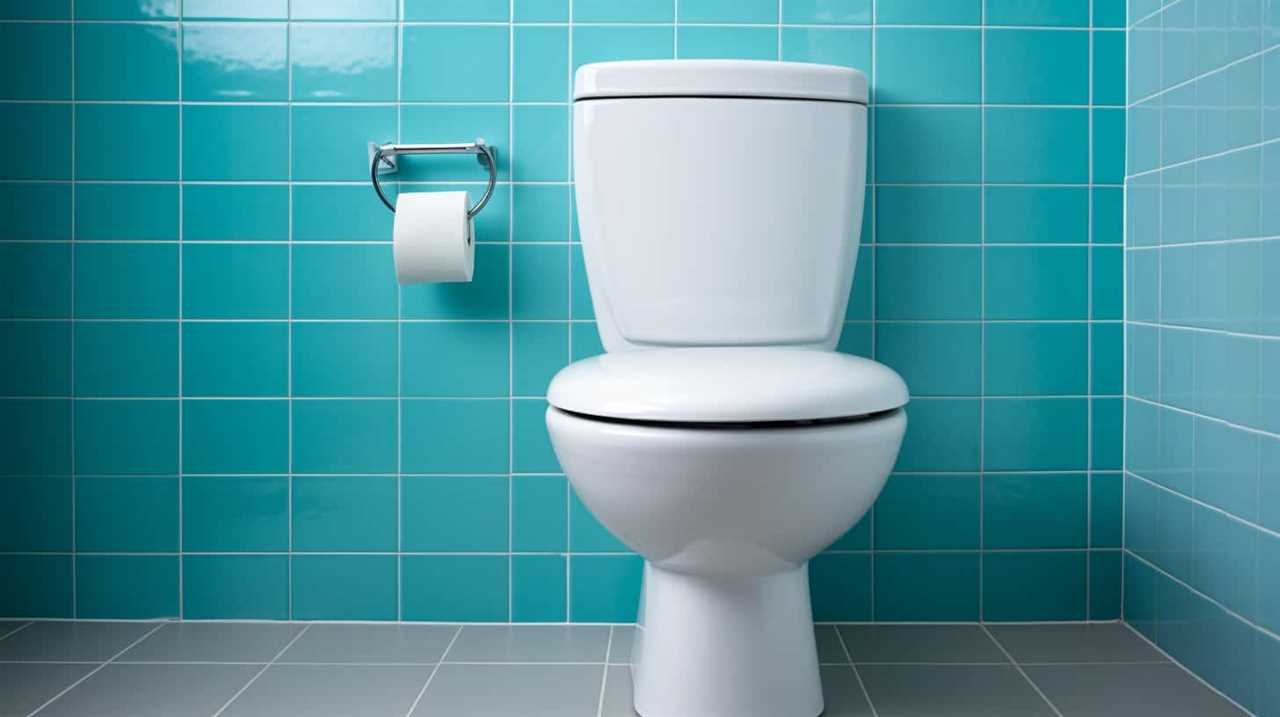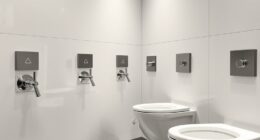As a DIY enthusiast, I’ve tackled many home improvement projects, but installing a toilet by myself was a challenge I was ready to conquer.
In this step-by-step guide, I’ll walk you through the process, from gathering the necessary tools and materials to putting the finishing touches on your newly installed toilet.
Together, we’ll navigate the intricacies of preparing the area, removing the old toilet, and successfully installing the new one.
Get ready to flush those plumbing worries away!
Key Takeaways
- Prepare the area by clearing and sanitizing the toilet area, ensuring proper ventilation.
- Remove the old toilet by disconnecting the water supply, draining the tank and bowl, and disposing of it properly.
- Install the new toilet by carefully following the manufacturer’s instructions, using a level to ensure it is level, and tightening bolts evenly for a proper seal.
- Test the toilet by flushing multiple times, checking for leaks and proper water flow, and referring to the installation manual for troubleshooting tips if needed.
Required Tools and Materials
To install a toilet by yourself, you’ll need a few tools and materials. Here are some toilet installation tips and common mistakes to avoid.
First and foremost, you’ll need a new toilet, preferably with a wax ring and mounting bolts included. Additionally, you’ll require an adjustable wrench, a screwdriver, a level, and a putty knife.
It’s essential to ensure that you have a proper water supply line and shut-off valve in place before beginning the installation process.
When installing the toilet, make sure to tighten the bolts evenly to prevent any wobbling. One common mistake to avoid is overtightening the bolts, as this can crack the toilet base.
Finally, remember to read the manufacturer’s instructions carefully to ensure a seamless installation.
With the tools and materials ready, let’s move on to preparing the area for installation.
Preparing the Area for Installation
Make sure you’ve cleared the area and have all the necessary tools ready before beginning the installation process. Cleaning and sanitizing the toilet area is essential to ensure a hygienic installation. Start by removing any items or obstacles around the toilet, such as rugs or trash cans. Use a disinfectant cleaner to thoroughly clean the toilet bowl, seat, and surrounding floor. Allow it to dry completely before proceeding with the installation.
Proper ventilation is also important during the installation process. Open windows and doors to allow for fresh air circulation. If the bathroom doesn’t have good natural ventilation, use a fan to help remove any odors or fumes that may be present. This will create a safer environment for the installation and prevent any unpleasant smells from lingering afterwards.
Below is a table summarizing the steps for preparing the area for installation:
| Steps for Preparing the Area |
|---|
| Clear the area |
| Clean and sanitize |
| Ensure proper ventilation |
Following these steps will ensure a clean and well-prepared area for installing your new toilet.
Removing the Old Toilet
First, check for any water supply or shut-off valves near the toilet that may need to be turned off before you can start removing it. Once the water is shut off, follow these steps to safely remove the old toilet:
-
Gather the necessary tools: adjustable wrench, sponge, and a bucket.
-
Disconnect the water supply line from the bottom of the tank using the adjustable wrench.
-
Remove the tank lid and flush the toilet to drain as much water as possible. Use the sponge to soak up any remaining water in the tank and bowl, and then squeeze it into the bucket.
-
Loosen the bolts securing the toilet to the floor using the wrench, and carefully lift the toilet straight up to detach it from the wax seal.
-
Place the old toilet in a garbage bag for proper disposal.
Remember to wear gloves and take caution when handling the old toilet to avoid any injury.
Installing the New Toilet
After you have removed the old toilet, it’s important to carefully read the instructions provided by the manufacturer for installing the new one.
To ensure a secure and leak-free toilet installation, there are common mistakes that you should avoid. Here are some tips to keep in mind:
-
Use a level: Before attaching the toilet to the floor, make sure it is level. This will prevent any rocking or instability.
-
Tighten bolts evenly: When securing the toilet to the floor, tighten the bolts evenly to ensure a proper seal. Uneven tightening can cause leaks.
-
Don’t overtighten water connections: When connecting the water supply line, be careful not to overtighten. Over-tightening can lead to stripped threads or even damage the toilet.
By following these tips and avoiding common mistakes, you can ensure a secure and leak-free toilet installation.
Once the new toilet is installed, it’s time to move on to testing and finishing touches.
Testing and Finishing Touches
To ensure everything is working properly, you should now test the new toilet by flushing it and checking for any leaks. Here are some testing methods and troubleshooting tips to help you with this process:
-
Flush Test: Flush the toilet multiple times to ensure that the water is flowing properly and the bowl is refilling as expected.
-
Leak Check: Inspect the base of the toilet and the water supply line for any signs of leaks. Look for water puddles or dampness around these areas.
-
Proper Flushing: Make sure the flush is powerful enough to remove waste effectively. If not, it could indicate a problem with the flush valve or clog in the drain.
If you notice any issues during the testing process, refer to the troubleshooting tips provided in the installation manual or seek professional help.
It’s crucial to ensure that your new toilet is functioning correctly to avoid future problems.
Conclusion
So there you have it, folks! Installing a toilet by yourself may seem like a daunting task, but with the right tools and materials, it can be a breeze.
By following the steps outlined in this guide, you’ll be able to remove the old toilet, prepare the area, and install the new toilet with ease.
Don’t be afraid to get your hands dirty and take on this DIY project. Remember, a well-functioning toilet is essential for a comfortable home.
Happy installing!











